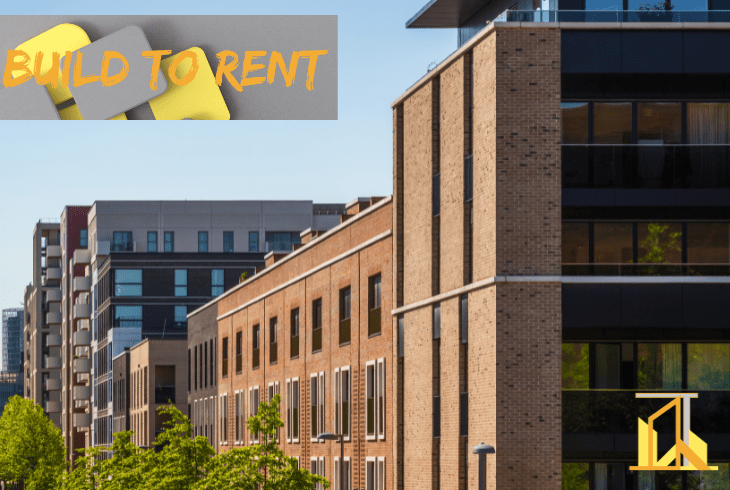Build to Rent is a distinct asset class in the PRS (private rented sector) as defined in the National Planning Policy Framework. This in order to simplify it’s function within the planning system. The PRS is a classification of UK housing whereby property is leased to a tenant by a private landlord. Build to Rent is within this class of housing. However where these two classifications differ is that the Buy-to-Let landlord may well hold a modest portfolio. Whereas Build to Rent developments are typically owned by property development companies and institutional investors. These schemes are purpose built and offer quality of build, security and a sense of community.
Build to Rent can address the housing shortage
The Open Data Communities offers specific demographic data that can be used by local authorities in determining the demand of those who wish to rent. Any assessment (build to rent homes) will allow a local authority to accommodate the needs of social groups along with differing demographics. Build to rent is a relatively new concept in respect of it’s practical origins and came about from the London Olympic games and Paralympics legacy programme of 2012. Specifically Stratford’s East Village athlete accommodation (Queen Elizabeth Olympic Park) and the subsequent conversion to rental properties. The East Village has become it’s very own residential district and has also integrated shops and restaurants.
The Olympics Legacy
As well as apartments and commercial outlets town houses have also been added. The addition of 5 bed properties for families complementing the flats designed for single renters and couples. While considering the legacy of the East Village it is also worth noting that the ripple effect has also benefited Hackney Wick. Land values within Hackney Wick have soared and at 2018 prices had increased by around 65%. The 2012 Olympics being seen as the catalyst for the gentrification of Hackney Wick. Further developments have sprung up in Hackney Wick but these are a mix of rentals and purchase. Developments include The Peabody Estate’s Fish Island Village, The Foundry and The Bagel Factory nudging provisions for around 850 new homes.
London Build to Rent homes cost 8.4% more on average
Build to rent isn’t necessarily the silver bullet the UK housing sector has been waiting for as the benefits come at a cost. Additional facilities such as gym, reception, co working, concierge, library, security and on site parking equates to higher than average rental costs. A Build to Rent report by JLL in 2021 confirmed BTR as the fastest growing real estate sector in the UK. Supply had increased since 2015 by over 50% per annum. Previous findings found that average rentals were 9.3% higher than the average local rent. London Build to Rent homes costing an average 8.4% more than other local area rental homes. Therefore the sector seemingly affordable to high earning young professionals alone.
London accounts for over half of BTR developments
Most developments, as of March 2019, were concentrated in London (12,000) accounting for over half of the 20,800 build to rent homes across the UK. However mindful that 40% of renters would appreciate renting from a housing provider or company as opposed to a letting agent and/or a private landlord. Occupational demand has continued to evolve. Even prior to COVID-19, households with children were the fastest growing component of the private rented sector. The experience is further enhanced by the fact that renters do not have to deal with or rely on a letting agent and/or a private landlord for repairs and maintenance. Placemaking is another top priority developers see in a successful BTR.
Long Term Tenancies crucial to successful Build to Rent
Placemaking refers to the process of creating quality places that people want to live, play, work and learn in. Amenities and facilities are conducive towards the quality of life of tenants/residents and define a sense of community. The more options to interact undoubtedly lead to friendships and community. Tenants signing up for long-term tenancies is crucial to the success of any BTR development. BTR facilities are known to be instrumental in ensuring higher retention among tenants. And higher retention rates mean longer tenancies which help BTR investors achieve optimum levels of return on their investments. Permanence of tenancy is also seen as a priority given the Tories are still not honouring their 2019 promise to abolish no fault evictions.
The Popularity of BTR is also becoming more prominent in Manchester, Liverpool, Birmingham and Leeds. Commuter towns and hubs around London such as Slough, Watford, Woking, Crawley and Reading are also seeing an increase in BTR schemes. Schemes have also taken off in Scotland through 2021 with an increase of 156% projects under construction compared to the year prior. The British Property Federation maintain quarterly statistics currently there are 237,362 build-to-rent UK homes (London & Regions). Of those 73,739 are complete with 47,764 under construction and 115,859 in the planning stage. London has 96,585 units and there are 140,777 units outside London.

